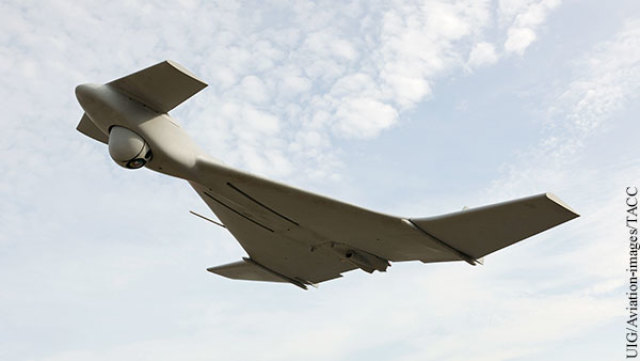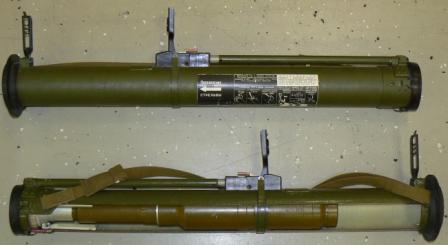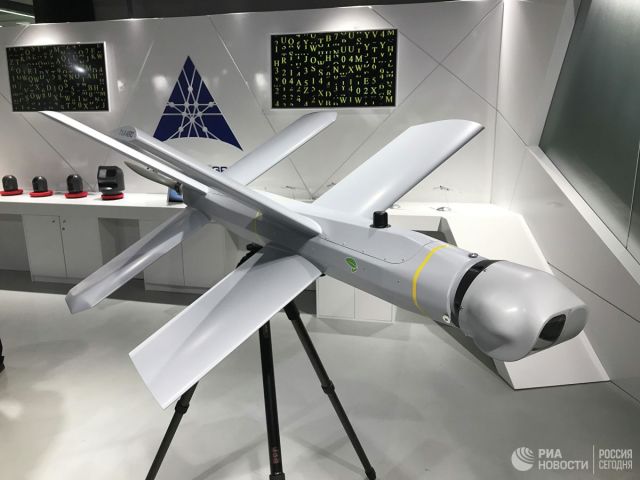The volleys of the last Karabakh war, which ended so abysmally for Armenia and so successfully for Azerbaijan, have died down. What military-technical lessons should Russia learn from what was demonstrated on the battlefield? Does our country have an opportunity to oppose something to the weapons that brought victory to Azerbaijan?
Azerbaijan has been preparing for this war for many years. In 2020, Azerbaijani platoons, companies and battalions were commanded by officers whose entire life, from the moment they started speaking (this is not an exaggeration), was spent under the slogans of national revenge in Karabakh and the expulsion of Armenians from the territory of Azerbaijan. This gave a very high level of motivation to the personnel. Azerbaijan made an attempt to "probe" the Armenian defense in 2016, but then Russia and Iran stopped Ilham Aliyev, and the offensive had to be stopped. This time, Aliyev, knowing how much Pashinyan pushed Russia away from Armenia, decided to take a risk and go all the way.
For many years, Azerbaijan has been buying the latest weapons from Russia, such as T-90 tanks. In recent years, Israel has first joined Russia as a supplier of military equipment, and more recently Turkey with its now famous Bayraktar unmanned aerial vehicles (UAVs). The Azerbaijanis continuously conducted exercises and stocked up on ammunition.
Before the beginning of the war, the Azerbaijani army was able, first, to create an overwhelming numerical superiority over the troops of Karabakh. Second, to mislead the enemy about their intentions. And third, to come up with a scheme for deploying and putting their troops into battle, in which the Azerbaijanis were ahead of the Armenians in concentrating their forces on any attacked area.
The numerical superiority of Azerbaijan was overwhelming and without any UAVs, as well as the qualitative superiority of the troops. To a large extent, Azerbaijan's victory is related to this: its troops were better armed and trained, there were many times more of them, they were better managed, the Azerbaijani military planning was better than the Armenian one – and, in General, Azerbaijan's victory was a foregone conclusion.
But the extent of this victory, the "battle score" and the price were not predetermined. And here we should turn to military equipment.
UAV factor
In a recent interview, Ilham Aliyev said that the drones of the Azerbaijani armed forces destroyed a billion dollars worth of Armenian equipment – the same amount as all other means without exception.
The Azerbaijanis used" large " Bayraktar TB2 UAVs and various types of barrage ammunition: for example, the Israeli Harop and Skystriker. These are, in fact, suicide drones-disposable UAVs-destroyers. It should be noted that Turkey also produces such devices: for example, Kargu-a quadrocopter with a sighting system, satellite radio control channel and an explosive charge. Both in Syria, in Libya, and now in Azerbaijan, the use of various types of unmanned combat aircraft has forced the opponents of Turkey and Azerbaijan to pay a huge price for their inability to effectively counter this threat. What conclusions should Russia draw from this?
First of all, we need such equipment ourselves and as quickly as possible. Barrage ammunition is an ideologically new weapon for us. They, roughly speaking, first "shoot", and then look for a target. This is essentially a one-time reconnaissance and strike complex. Such devices make it possible to conduct aerial reconnaissance and destroy identified targets to any commander of a motorized rifle company, if not a platoon.
Now an officer on the front line does not have to first wait for a dug-in and camouflaged tank to open fire on you, and then request artillery fire on the radio. Or wait for your tanks or anti-tank missiles to hit the enemy who discovered themselves. Now you can survey your offensive line from the air, identify important targets, and use the same UAVs to destroy them – you don't need to ask anyone for anything and wait for someone. We do not know how to do this, we do not have a well-developed tactics of such actions, nor the equipment for this.
The example of the Azerbaijani armed forces shows that the presence of drones-destroyers multiplies the enemy's losses and reduces their own by the same factor. This also reduces the cost of war – you need to spend a lot of artillery shells on a point target, or raise your "big" UAV and, risking it, direct fire with high-precision guided artillery shells that cost comparable money. Taking into account the losses in "large" UAVs and the rate of consumption of shells, barrage ammunition makes war much cheaper.
Russia could create such ammunition itself or go the beaten path-buy technology from Israel. Another option is to involve Iran, which is also one of the world leaders in the production of barrage ammunition and even has such anti-aircraft systems. An Iranian one-time killer drone was allegedly shot down in Afghanistan by a CIA plane carrying Michael d'andrea, a senior CIA official responsible for the assassination of IRGC General Qassem Suleimani in Baghdad. Iranian drones-destroyers were used in Syria more than once, this is a proven technique in battle. In other words, we have the opportunity to get various equipment for this purpose – and this needs to be done urgently. It is important not to miss with tactical and technical characteristics – the low price of such weapons is mandatory.
The second important lesson is the importance of drone strikes. And here again there is the question of the price of war. The work that Russia performs an expensive mi-28 attack helicopter with two live pilots, Turkey and Azerbaijan perform a much cheaper drone with low-power ammunition, which, however, is enough to destroy typical targets on the battlefield. If it is shot down, then there is no problem, you can raise a new one in the air, and we lose a qualified crew and many times more money for equipment.
It is much more difficult to hit a UAV, it uses a lot of composites instead of metal, it is small, radars detect it at a very short distance, its infrared signature is low, and the noise level is at the level of a car. At the same time, its ability to detect targets is not inferior to that of helicopters, and highly directional satellite communication channels with operators are almost impossible to suppress.
Most recently, the first batch of Orion attack UAVs entered service with Russian troops, but we must admit that we have lagged behind Turkey, Israel, Iran and the United States for many years in this area. This gap urgently needs to be closed, and the war in Karabakh shows how urgent it is. We also need to critically assess what kind of ammunition we are going to equip them with – they must be inexpensive and, as the Turks have shown, can be small-sized. The ability to direct artillery fire from any non-reusable UAV, including by laser "illumination" of targets, is critically important. Russia has the technical capabilities to supply such equipment to the troops, you just need to do it-and that's it.
Lessons for air defense
However, Russian troops need something else-the ability to protect themselves from such equipment.
UAVs in the form in which they were used by Turkey and Azerbaijan are a problem for military air defense. If the positions of the s-400 SAMS or stationary objects can still be covered with "Shells", then the troops cannot be protected by them, other systems are needed. Theoretically, a full-fledged military air defense system can protect troops from such threats as" large "UAVs, the same" Bayraktars", but even here a lot of work is needed. We need, for example, a unified system of control and information exchange, when the military air defense could get data on the presence of a target in the air, even from ground units. The Russian armed forces should conduct research exercises involving large groups of ground troops and our own combat UAVs in order to determine which way the military air defense system needs to be improved.
So, there is an opinion that helicopters can be involved in the fight against UAVs. The same Ka-52 with a different radar instead of the standard one and air–to-air missiles could simply become a "Bayraktar killer".
Unfortunately, this helicopter is now being upgraded "in the other direction", when it will completely lose even its existing capabilities. But still, it is a potentially successful platform for such tasks, and radars that could give it the opportunity to work on low-visibility UAVs are available in Russia, and ready for mass production. You just need to "merge" one with the other.
Defense against barraging ammunition is much more difficult. Today, no army in the world has a ready-made recipe for repelling attacks by UAVs-destroyers, suicide drones. The fact is that with their massive use, no anti-aircraft missiles, no radars will be enough. In fact, to have a chance to repel the attacks of such UAVs, each or almost every unit of military equipment itself must be an air defense system. Today, no one has such an opportunity. What is necessary?
First, the improvement of fire control systems and the mutual exchange of information of combat vehicles. Roughly speaking, we need the technical ability to transmit target designation from the military air defense radar to each BMP, so that each BMP can point weapons at an air target and hit it.
It looks like science fiction, but it's not science fiction. This can be done, even with the existing technologies, but we need to do it, such a system will not appear in six months, this is serious work. Now the Russian Federation is upgrading the BMP-2, the gun turrets are being changed to gun modules with the same 30-mm gun. It is in this work that it would be worth "embedding" the need to integrate military air defense with the rest of the ground forces ' combat equipment. Fortunately, the second component of such a system – 30-millimeter projectiles with programmable detonation – is already available in Russia and has even been tested in Syria. You need to take advantage of this.
The second important direction is the urgent acceleration of work on bringing the 2c38 anti-aircraft self-propelled gun to the series, equipped with a 57-mm anti-aircraft gun that fires both guided projectiles and projectiles with programmable detonation. This machine, together with the inclusion of all carriers of 30-mm automatic guns (BMP, BTR), will protect troops from attacks by UAV destroyers. The problem is the timing – most likely, we will not have time to saturate the troops with these installations until the next big war, which is clearly not far off. But there is a "cheat move".
Until now, the storage warehouses of the Russian armed forces have a large number of old "heroes of Vietnam" - automatic anti-aircraft guns S-60 caliber 57 mm. Now they are almost useless as a means of air defense. However, they are being effectively upgraded abroad. For example, the Slovenian Valhalla turrets equips such a gun with a sighting module with a thermal imager, a mechanism for continuous delivery of projectiles (92 pieces in a row) and an automated guidance system. As a result, the old Soviet gun turns into a uniform super weapon. The disadvantage is the small (400 shots) resource of the barrel, but spare barrels are also stored, and they change quickly on this gun. The programmer for projectiles on it also "gets up", this was checked.
2s38 anti-aircraft self-propelled gun equipped with a 57 mm anti-aircraft gun
Alexander Timokhin









